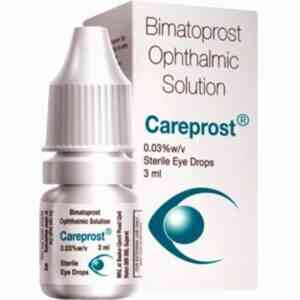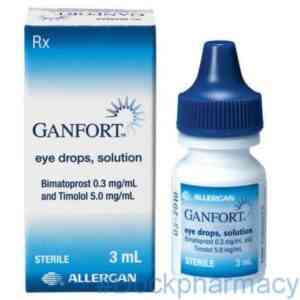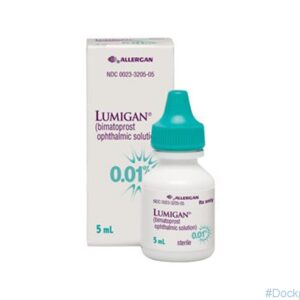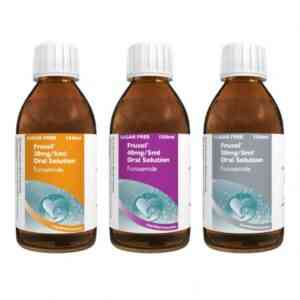- Bimatoprost is an anti-glaucoma Eye drops
- Lumigan eye drops Generic
Bimatoprost Eye Drops 0.01% – Lumigan Generic, 3ml
If you suffer from high pressure in the eyes, Bimatoprost Eye Drops 0.01% can help you get relief. These eye drops work to reduce the pressure in your eyes, whether used on their own or in conjunction with other eye drops, like beta-blockers. Bimatoprost is the active ingredient in these eyedrops and is also the generic version of Lumigan. So if you’re looking for a cost-effective way to get relief from high eye pressure, Bimatoprost Eye Drops 0.01% are a great option.
Bimatoprost Eye Drops can be used to treat cats and dogs
Your eye contains a clear, watery liquid that feeds the inside of the eye. Liquid is constantly being drained out of the eye and new liquid is made to replace this. If the liquid cannot drain out quickly enough, the pressure inside the eye builds up. This medicine works by increasing the amount of liquid that is drained. This reduces the pressure inside the eye. If the high pressure is not reduced, it could lead to a disease called glaucoma and eventually damage your sight.
What is Glaucoma?
Glaucoma is a common eye condition where the optic nerve, which connects the eye to the brain, becomes damaged.
It’s usually caused by fluid building up in the front part of the eye, which increases pressure inside the eye.
Glaucoma can lead to loss of vision if it’s not diagnosed and treated early.
It can affect people of all ages, but is most common in adults in their 70s and 80s.
Glaucoma does not usually cause any symptoms to begin with.
It tends to develop slowly over many years and affects the edges of your vision (peripheral vision) first.
For this reason, many people do not realise they have glaucoma, and it’s often only picked up during a routine eye test.
If you do notice any symptoms, they might include blurred vision, or seeing rainbow-coloured circles around bright lights.
Both eyes are usually affected, although it may be worse in 1 eye.
Very occasionally, glaucoma can develop suddenly and cause:
Visit an opticians or a GP if you have any concerns about your vision.
If you have glaucoma, early diagnosis and treatment can help stop your vision getting worse.
Without treatment, glaucoma can eventually lead to blindness.
If you develop symptoms of glaucoma suddenly, go to your nearest eye casualty unit or A&E as soon as possible.
This is a medical emergency that may require immediate treatment.
There are several different types of glaucoma.
The most common is called primary open angle glaucoma. This tends to develop slowly over many years.
It’s caused by the drainage channels in the eye becoming gradually clogged over time.
Other types of glaucoma include:
- acute angle closure glaucoma – an uncommon type caused by the drainage in the eye becoming suddenly blocked, which can raise the pressure inside the eye very quickly
- secondary glaucoma – caused by an underlying eye condition, such as inflammation of the eye (uveitis)
- childhood glaucoma (congenital glaucoma) – a rare type that occurs in very young children, caused by an abnormality of the eye
Glaucoma can occur for a number of reasons.
Most cases are caused by a build-up of pressure in the eye when fluid is unable to drain properly.
This increase in pressure then damages the nerve that connects the eye to the brain (optic nerve).
It’s often unclear why this happens, although certain things can increase the risk, including:
- your age – glaucoma becomes more common as you get older
- your ethnicity – people of African, Caribbean or Asian origin are at a higher risk
- your family history – you’re more likely to develop glaucoma if you have a parent or sibling with the condition
- other medical conditions – such as short-sightedness, long-sightedness and diabetes
It’s not clear whether you can do anything to prevent glaucoma, but having regular eye tests should pick it up as early as possible.
The treatment recommended for you will depend on the type of glaucoma you have, but the options are:
- eyedrops – to reduce the pressure in your eyes
- laser treatment – to open up the blocked drainage tubes or reduce the production of fluid in your eyes
- surgery – to improve the drainage of fluid
You’ll also probably need regular appointments to monitor your condition and check the treatment is working.
Further Information on Glaucoma
Bimatoprost Eye Drops 0.01% Reviews
After using Bimatoprost Eye Drops 0.01%, it’s helpful to let others know about your experience. Reviews of an item help other users know that medicines received have helped the condition it is claimed for, how well the treatment worked or any issues to be aware of. We invite our users to leave a review of both their treatment and of the service provided. Click on the reviews tab to see if there has been feedback on this item.
What is the price of Bimatoprost Eye Drops 0.01%?
The price of Bimatoprost Eye Drops 0.01% is £8.99
Where can you buy Bimatoprost Eye Drops 0.01%?
You can buy Bimatoprost Eye Drops 0.01% at Dock Pharmacy Essex UK, UK Online Pharmacy.
Can you buy Bimatoprost Eye Drops 0.01% Over the counter?
Bimatoprost Eye Drops 0.01% is not available to buy over the counter. You need a prescription to Bimatoprost Eye Drops 0.01%
Bimatoprost Eye Drops 0.01%Lumigan Eye Drops is available to buy with a prescription at Dock Pharmacy Essex UK, UK Online Pharmacy.
Brand
LUMIGAN
How To Use
How to use Bimatoprost
Always use this medicine exactly as your doctor or pharmacist has told you. Check with your doctor or pharmacist if you are not sure.
This medicine should only be applied to the eye. The recommended dose is one drop of Bimatoprost in the evening, once daily in each eye that needs treatment.
If you use Bimatoprost with another eye medicine, wait at least five minutes between using Bimatoprost and the other eye medicine.
Do not use more than once a day as the effectiveness of treatment may be reduced.
Instructions for use:
You must not use the bottle if the tamper-proof seal on the bottle neck is broken before you first use it.
- Take the bottle (picture 1) out of the carton box.
- Wash your hands. Tilt your head back and look at the ceiling (picture 2).
- Gently pull down the lower eyelid until there is a small pocket (picture 3).
- Turn the bottle upside down and squeeze it to release one drop into each eye that needs treatment (picture 4).
- Let go of the lower lid and close your eye for 30 seconds (picture 5).
Wipe off any excess that runs down the cheek.
If a drop misses your eye, try again.
To help prevent infections and avoid eye injury, do not let the tip of the bottle touch your eye or anything else. Put the cap back on and close the bottle straight after you have used it.
If you use more Bimatoprost than you should
If you use more Bimatoprost than you should, it is unlikely to cause you any serious harm.
Put your next dose in at the usual time. If you are worried, talk to your doctor or pharmacist.
If you forget to use Bimatoprost
If you forget to use Bimatoprost, use a single drop as soon as you remember, and then go back to your regular routine. Do not take a double dose to make up for a forgotten dose.
If you stop using Bimatoprost
Bimatoprost should be used every day to work properly. If you stop using Bimatoprost the pressure inside your eye may go up, therefore talk to your doctor before stopping this treatment.
If you have any further questions on the use of this medicine, ask your doctor or pharmacist.
Product Details
What you need to know before you use Bimatoprost
Do not use Bimatoprost:
- if you are allergic to bimatoprost or any of the other ingredients of this medicine (listed in section 6);
- if you have had to stop using eye drops in the past because of a side effect of the preservative benzalkonium chloride.
Warnings and precautions
Talk to your doctor or pharmacist before using Bimatoprost.
Talk to your doctor:
- if you have any breathing problems;
- if you have liver or kidney problems;
- if you have had a cataract surgery in the past;
- if you have dry eye;
- if you have or have had any problems with your cornea (front transparent part of the eye);
- if you wear contact lenses (see ‘Bimatoprost contains benzalkonium chloride’);
- if you have or have had low blood pressure or low heart rate;
- if you have had a viral infection or inflammation of the eye.
Bimatoprost may cause your eyelashes to darken and grow, and cause the skin around the eyelid to darken too. The colour of your iris may also go darker over time. These changes may be permanent. The change may be more noticeable if you are only treating one eye.
Children and adolescents
This medicine has not been tested in children under the age of 18 and therefore Bimatoprost should not be used by patients under 18 years.
Other medicines and Bimatoprost
Tell your doctor or pharmacist if you are taking, have recently taken or might take any other medicines.
Pregnancy and breast-feeding
If you are pregnant or breast-feeding, think you may be pregnant or are planning to have a baby, ask your doctor or pharmacist for advice before taking this medicine.
You should not breast-feed while using Bimatoprost as this medicine may get into breast milk.
Driving and using machines
Your sight may become blurred for a short time just after using this medicine. You should not drive or use machines until your sight is clear again.
Bimatoprost contains benzalkonium chloride
This medicine contains 0.2mg benzalkonium chloride in each ml of solution. Benzalkonium chloride may be absorbed by soft contact lenses and may change the colour of the contact lenses. You should remove contact lenses before using this medicine and put them back 15 minutes afterwards.
Benzalkonium chloride may also cause eye irritation, especially if you have dry eyes or disorders of the cornea (the clear layer at the front of the eye). If you feel abnormal eye sensation, stinging or pain in the eye after using this medicine, talk to your doctor.
Bimatoprost contains phosphate buffer
This medicine contains 0.95mg phosphates in each ml of solution. If you suffer from severe damage to the clear layer at the front of the eye (the cornea), phosphates may cause in very rare cases cloudy patches on the cornea due to calcium build-up during treatment.
Side Effects
Like all medicines, this medicine can cause side effects, although not everybody gets them.
Very common: may affect more than 1 in 10 people
Affecting the eye
- Slight redness (up to 29% of people)
Common: may affect up to 1 in 10 people
Affecting the eye
- Small breaks in the surface of the eye, with or without inflammation
- Irritation
- Itchy eyes
- Longer eyelashes
- Irritation, when a drop is put in the eye
- Eye pain
Affecting the skin
- Red and itchy eyelids
- Darker skin colour around the eye
- Hair growth around the eye
Uncommon: may affect up to 1 in 100 people
Affecting the eye
- Darker iris colour
- Tired eye
- Swelling of the surface of the eye
- Blurred vision
- Loss of eye lashes
Affecting the skin
- Dry skin
- Crusting on the edge of the eyelid
- Swelling of the eyelid
- Itching
Affecting the body
- Headache
- Feeling of sickness
Not known: frequency cannot be estimated from the available data
Affecting the eye
- Macular oedema (swelling of the retina at the back of the eye which may lead to worsening vision)
- Darker eyelid colour
- Eyes appear sunken
- Eye dryness
- Sticky eyes
- A feeling that something is in your eye
- Swelling of the eye
- Increasing tears
- Ocular discomfort
- Sensitivity to light
Affecting the body
- Asthma
- Worsening of asthma
- Worsening of the lung disease called chronic obstructive pulmonary disease (COPD)
- Shortness of breath
- Symptoms of allergic reaction (swelling, redness of the eye and rash of the skin)
- Dizziness
- Increased blood pressure
- Skin discolouration (periocular)
In addition to the side effects for Bimatoprost, the following side effects have been seen with another medicine containing a higher strength of bimatoprost (0.3 mg/ml):
- Ocular burning
- An allergic reaction in the eye
- Inflamed eyelids
- Difficulty in seeing clearly
- Worsening of vision
- Swelling of the see-through layer that covers the eye
- Tears
- Darker eyelashes
- Retinal bleeding
- Inflammation within the eye
- Cystoid macular oedema (swelling of the retina within the eye leading to worsening vision)
- Eyelid twitching
- Eyelid shrinking, moving away from the surface of the eye
- Skin redness around the eye
- Weakness
- An increase in blood-test results that show how your liver is working
Reporting of side effects
If you get any side effects, talk to your doctor or pharmacist. This includes any possible side effects not listed in this leaflet. You can also report side effects directly via the Yellow Card Scheme (Website: www.mhra.gov.uk/yellowcard or search for MHRA Yellow Card in the Google Play or Apple App Store). By reporting side effects you can help provide more information on the safety of this medicine.
Ingredients
What Bimatoprost contains
- The active substance is bimatoprost. One ml of solution contains 0.1mg bimatoprost.
- The other ingredients are benzalkonium chloride (preservative), sodium chloride, sodium phosphate dibasic heptahydrate, citric acid monohydrate and water for injections. Small amounts of hydrochloric acid or sodium hydroxide may be added to keep the level of acid (pH levels) normal.
Questions and answers of the customers
There are no questions yet, be the first to ask something for this product.
You Might Also Like
Original price was: £19.50.£17.20Current price is: £17.20.
- Bimatoprost is an anti-glaucoma Eye drops
- Lumigan eye drops Generic
Original price was: £19.50.£17.20Current price is: £17.20.
- Availability: in stock
Original price was: £22.50.£19.25Current price is: £19.25.
- Ganfort Generic eye drops
- Preservative free eye drops
Original price was: £22.50.£19.25Current price is: £19.25.
- Availability: in stock
Original price was: £21.95.£15.50Current price is: £15.50.
- Treatment for Glaucoma
- The active substance is bimatoprost. One ml of solution contains 0.1 mg bimatoprost.
Learn More
Original price was: £21.95.£15.50Current price is: £15.50.
- Availability: in stock
Other Products From This Seller
Original price was: £34.99.£24.95Current price is: £24.95.
Wahl Extreme Grip Beard Trimmer Precision Grooming with Comfort Grip and Adjustable Cutting Lengths Take Control of Your Grooming with the Wahl Extreme Grip Beard Trimmer Transform your grooming routine with the Wahl Extreme Grip Beard Trimmer, designed for precision, comfort, and versatility. Whether you’re sculpting a sharp beard line, maintaining stubble, or styling longer […]
Learn MoreOriginal price was: £34.99.£24.95Current price is: £24.95.
- Availability: in stock
Original price was: £23.99.£17.95Current price is: £17.95.
WAHL Vogue Corded Hair Clipper for Men Professional Precision with Adjustable Taper Lever and High-Carbon Steel Blades Transform Your Grooming Routine with the WAHL Vogue Corded Hair Clipper for Men Elevate your grooming experience with the WAHL Vogue Corded Hair Clipper, a professional-grade grooming tool designed for men who value precision and performance. Whether you’re […]
Learn MoreOriginal price was: £23.99.£17.95Current price is: £17.95.
- Availability: in stock
Original price was: £30.00.£8.95Current price is: £8.95.
Wahl Peaky Blinders Beard Trimmer Gift Set Limited Edition Cordless Grooming Kit for Men Join the ranks of the Peaky Blinders with the Wahl Peaky Blinders Beard Trimmer Gift Set. This exclusive collaboration between Wahl and the iconic TV series offers a comprehensive grooming solution for the modern gentleman. Key Features: Rechargeable Cordless Trimmer: Equipped […]
Learn MoreOriginal price was: £30.00.£8.95Current price is: £8.95.
- Availability: in stock
Original price was: £54.63.£39.95Current price is: £39.95.
OMRON RS2 Wrist Blood Pressure Monitor Compact and Accurate BP Monitoring The OMRON RS2 Wrist Blood Pressure Monitor is a compact and user-friendly device designed for quick and accurate blood pressure and pulse rate measurements. Utilizing the oscillometric method, it ensures reliable readings with minimal user input. Key Features: Automatic Inflation: The device inflates the […]
Learn MoreOriginal price was: £54.63.£39.95Current price is: £39.95.
- Availability: in stock
Original price was: £69.99.£59.99Current price is: £59.99.
Omron M4 Intelli IT Blood Pressure Monitor Bluetooth-Enabled Upper Arm BP Monitor with Intelli Wrap Cuff The Omron M4 Intelli IT Blood Pressure Monitor is a clinically validated device designed for easy and accurate blood pressure monitoring at home. With Bluetooth connectivity, it seamlessly syncs your readings to the Omron Connect app, allowing you to […]
Learn MoreOriginal price was: £69.99.£59.99Current price is: £59.99.
- Availability: in stock
Original price was: £39.99.£33.95Current price is: £33.95.
Omron M2+ Upper Arm Blood Pressure Monitor The Omron M2+ Upper Arm Blood Pressure Monitor is a fully automatic device designed to provide quick and accurate blood pressure and pulse rate measurements. Utilizing the oscillometric method, it ensures reliable readings with minimal user input. Key Features: IntelliSense Technology: Automatically inflates the cuff to the ideal […]
Learn MoreOriginal price was: £39.99.£33.95Current price is: £33.95.
- Availability: in stock
Original price was: £19.99.£9.95Current price is: £9.95.
Ted Baker M Gift Set 30ml EDT Spray and 150ml Body Wash Experience the refined elegance of the Ted Baker M Gift Set, comprising a 30ml Eau de Toilette Spray and a 150ml Body Wash. This meticulously crafted set offers a harmonious blend of notes, encapsulating masculinity and sophistication. Ideal for gifting or personal indulgence, […]
Learn MoreOriginal price was: £19.99.£9.95Current price is: £9.95.
- Availability: in stock
Original price was: £33.00.£19.99Current price is: £19.99.
Iceberg Twice Pour Homme Eau de Toilette 125ml Gift Set Aromatic Fougère Fragrance for Men Discover the timeless elegance of Iceberg Twice Pour Homme Eau de Toilette 125ml Gift Set, a sophisticated aromatic fougère fragrance designed for the modern man. This exclusive gift set includes a 125ml Eau de Toilette, offering a complete scent experience […]
Learn MoreOriginal price was: £33.00.£19.99Current price is: £19.99.
- Availability: in stock
Original price was: £44.00.£28.95Current price is: £28.95.
Davidoff Cool Water Gift Set For Men, 2pc Gift set Dive into the invigorating essence of the ocean with the Davidoff Cool Water Gift Set for Men. This exclusive 2-piece set includes a 4.2 fl. oz. Eau de Toilette and a 2.5 fl. oz. After Shave Balm, offering a complete grooming experience that embodies freshness […]
Learn MoreOriginal price was: £44.00.£28.95Current price is: £28.95.
- Availability: in stock
Original price was: £19.95.£9.95Current price is: £9.95.
Ted Baker W Pink Gift Set 30ml EDT and 150ml Shower Gel Experience the elegance of Ted Baker W Pink Gift Set, comprising a 30ml Eau de Toilette and a 150ml Shower Gel. This exquisite set offers a harmonious blend of floral and woody notes, encapsulating femininity and sophistication. Ideal for gifting or personal indulgence, […]
Learn MoreOriginal price was: £19.95.£9.95Current price is: £9.95.
- Availability: in stock





















